History of Sergiev Posad
13th Century
Foundation of the Troitse-Sergieva Monastery
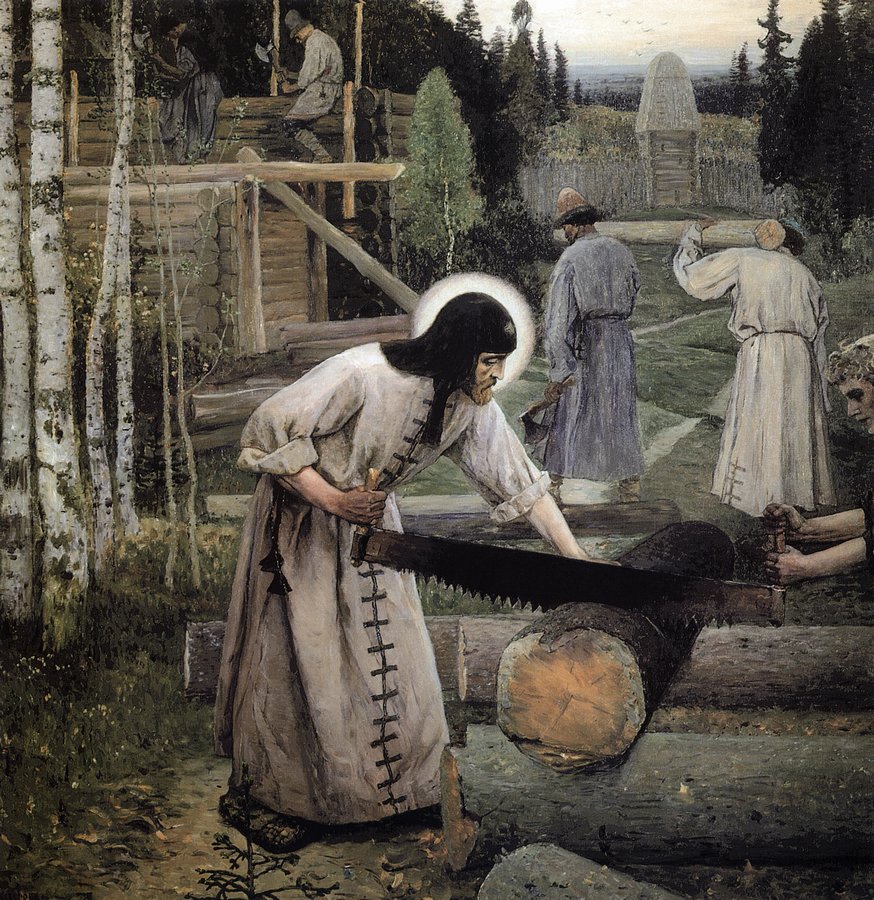
The modern day city of Sergiev Posad is so closely linked with the establishment of the Troitse-Sergieva Lavra that the official date of the city's foundation is 1337 - the date the lavra was founded by St Sergius (Sergi) of Radonezh. The lavra stated its life as a small wooden church dedicated to the Holy Trinity, located deep inside thick forests. It was established by the monk Sergius after he had left his previous monastery with the desire to live in a stricter form of monkhood. Over time more monks came and a monastic community began to grow. In 1345 the community was officially organised as a monastery and Sergius became the second abbot of the monastery. With the support of the princes of Moscow, the monastery continued to grow throughout the 14th Century to become the main spiritual centre of the Moscow Principality.
St Sergius of Radonezh
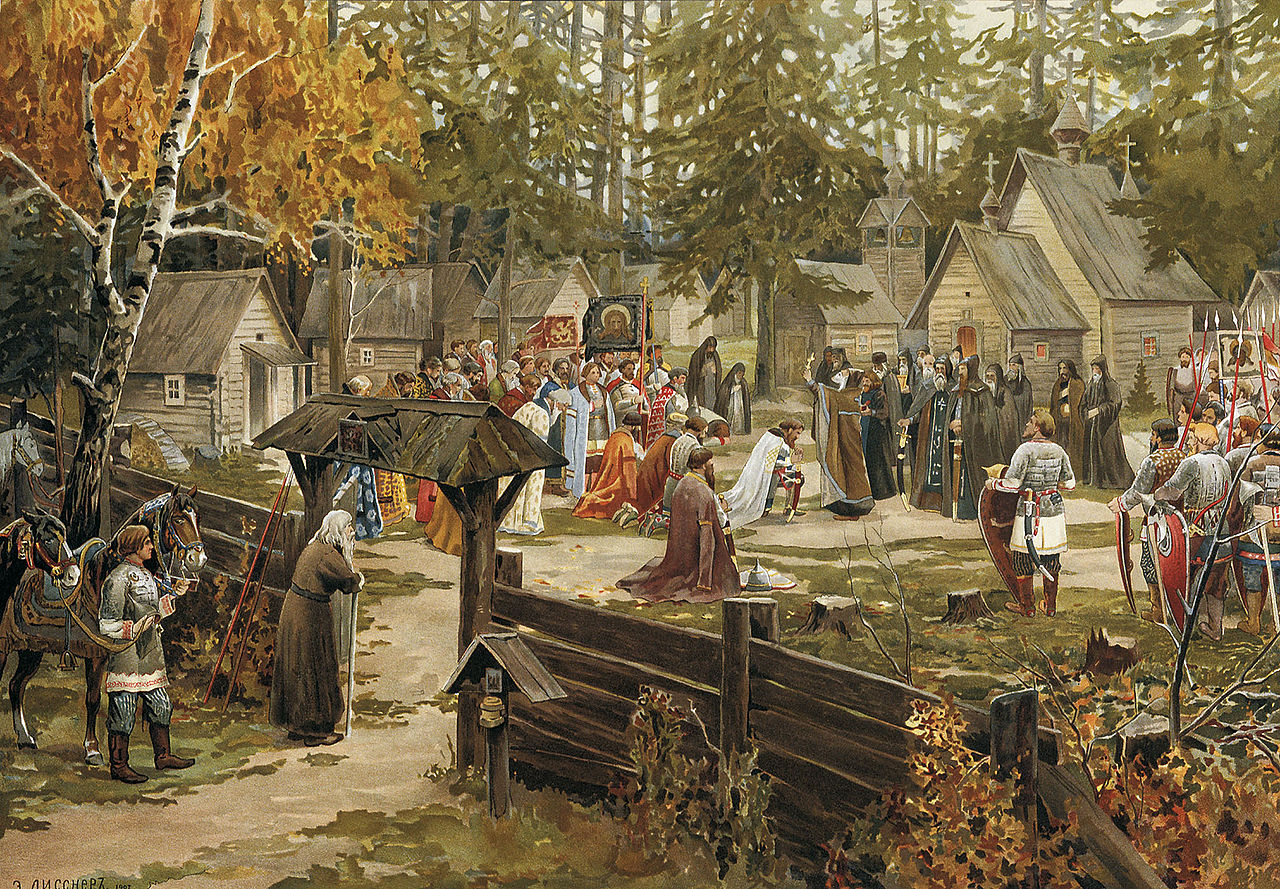
Even during his lifetime Sergius was widely revered. He made many attempts to unite the Russian princes and to make them understand the senselessness of their internecine wars when greater enemies from outside were threatening Rus lands. He supported Grand Prince Dmitry Ivanovich of Vladimir's (later known as Dmitry Donsky) campaign against the Mongol-Tatars. In 1380 Dmitry visited the monastery and was blessed by Sergius on his way to fight the Mongol-Tatars at the Battle of Kulikovo Field. Sergius also sent with Dmitry two monks - Peresvet and Oslyabr - to participate in the battle. Even after Sergius' death in 1392 the monastery continued to thrive, becoming a spiritual and cultural centre of Rus lands famed for producing chronicles, manuscripts hagiographies and icons. Sergius was canonised as St Sergius of Radonezh in the mid-15th century and remains one of the most revered native Russian saints, if not actually the most revered.
14th Century
Trinity Cathedral
![]()
In 1408 the monastery was attacked and subsequently sacked by Emir Edigu of the Golden Horde. However the monastery soon recovered and continued to develop. Abbot Nikon (later St Nikon of Radonezh), St Segius' successor as abbot of the monastery, ordered the construction of the Trinity Cathedral. The Trinity Cathedral was completed in 1422 and upon completion housed St Sergius' shrine and later held St Nikon's shrine too. The famous icon painter Andrey Rublev participated in the decoration of the new cathedral and his most famous work - the Trinity Icon - was completed for the cathedral's iconostasis.
15th Century
Further Development

In the mid-16th century thick and strong white-stone walls were constructed around the monastery measuring 1,284 metre in length with 12 towers. In 1585 the monastery's Dormition Cathedral was completed. The construction of the cathedral was ordered by Tsar Ivan the Terrible and based on the design of the Dormition Cathedral in Moscow's Kremlin. Further gifts were lavished on the monastery by Tsar Feodor II so that the monks would pray an heir would be born to the childless tsar.
16th Century
Siege of Troitse-Sergiev Monastery
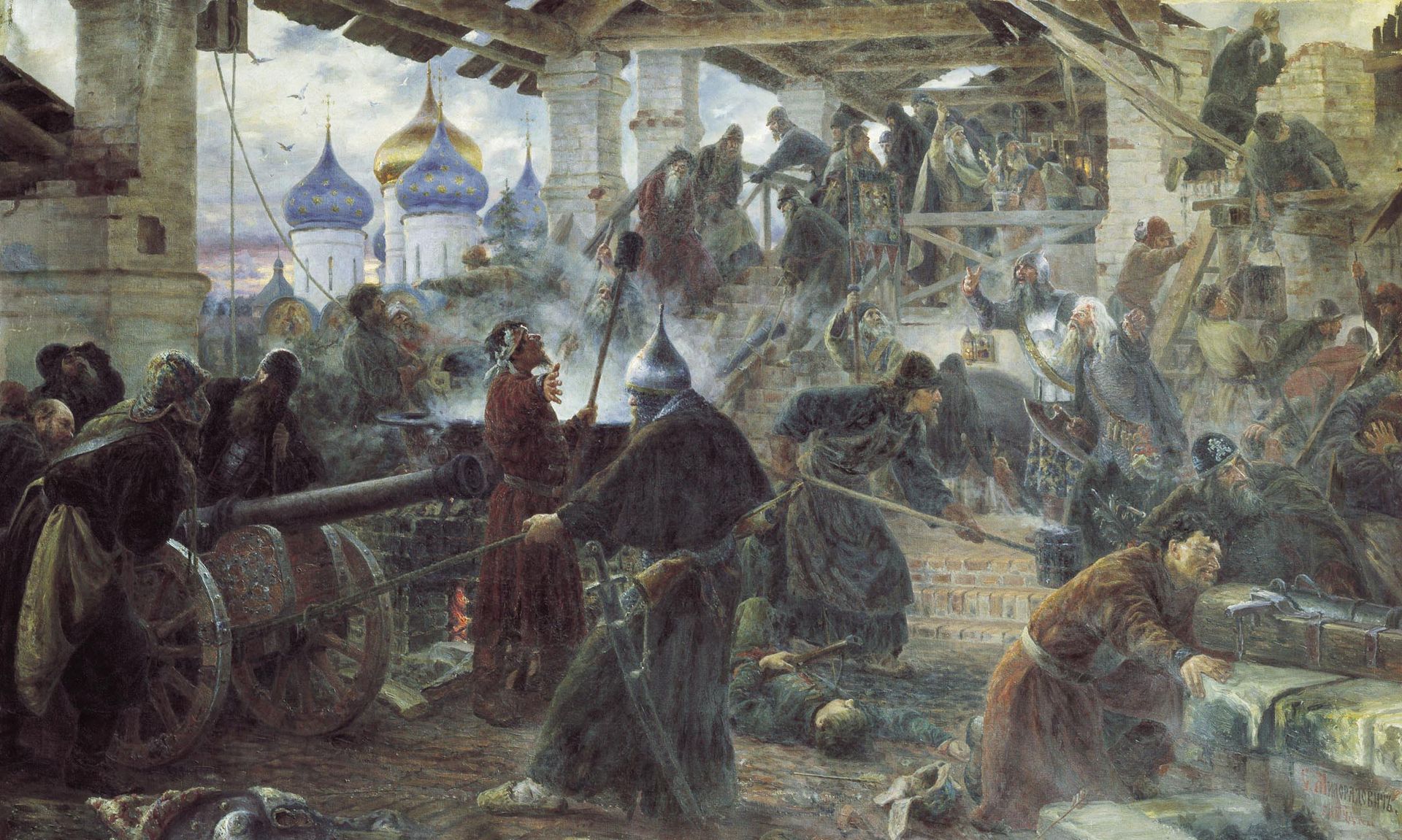
The monastery played a significant role in the Time of Troubles, starting in 1606 when Tsar Boris Godunov was buried within the monastery's grounds. In September 1608 the Second False Dmitry ordered his Polish-Lithuanian allies to lay siege of the monastery. The monastery was now an extremely significant cultural centre of Russia, rich in church treasures but also very-well fortified. Capturing the monastery would help secure False Dmitry's claim to the throne. However inside the monastery was a garrison of around 2,400 people, made up of monks, streltsy guardsmen, nobles and peasants. Also inside was Ksenia Godunova who had become a nun by the name of Olga after the death of her father Tsar Boris Godunov. The monastery was able to withstand the siege for 16 months, despite lack of food and an outbreak of scurvy. News of the approach of Prince Mikhail Skopin-Shuisky's army caused the Polish-Lithuanian troops to retreat and the siege was lifted in January 1610.
17th Century
Royal Refuge

In 1682 Sofia Alekseevna had succeeded in being named regent on behalf of her infirm brother Ivan V and her half-brother Peter I (later known as Peter the Great) by encouraging the streltsy guardsmen to rebel. However later in the same year Sofia had lost control of the streltsy and her former ally Prince Ivan Khovansky, leader of the streltsy, rebelled due to his support of the Old Believers. Sofia, Ivan V and Peter I were all forced to flee Moscow and found refuge in the Troitse-Sergiev Monastery until the rebellion could be repressed. The monastery once again served as a refuge for Peter I in 1689 when he was forced to flee there, this time from his half-sister Regent Sofia who was attempting to stop his plans for taking his rightful throne and removing her as regent. Sofia's plans were unsuccessful and on Peter I's return to Moscow he was sole tsar.
18th and 19th Centuries
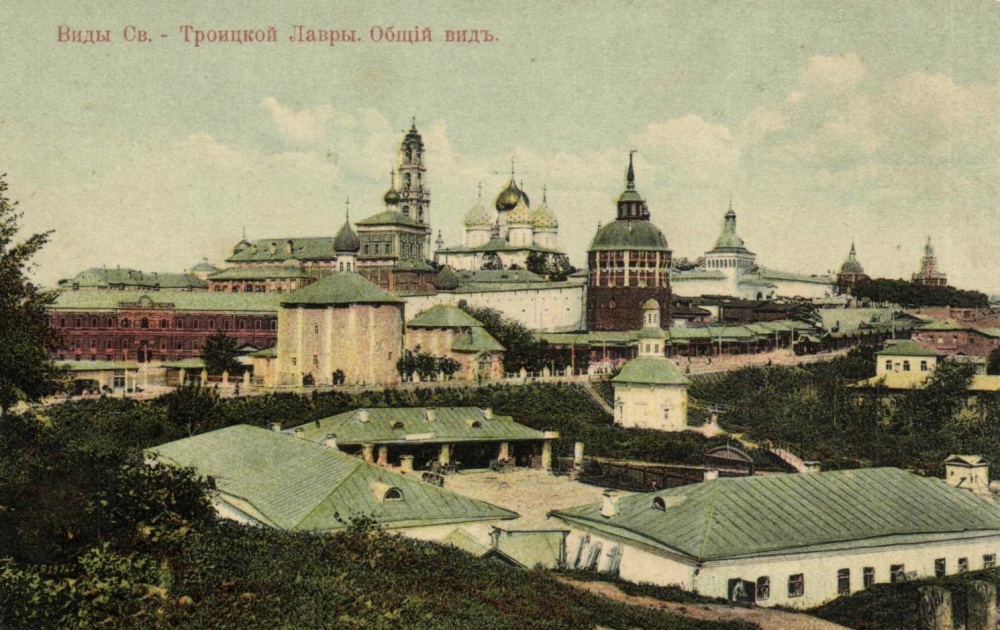
In 1742 Empress Anna opened a spiritual seminary in the monastery and shortly afterwards in 1744 granted the monastery the status of lavra, the highest status among Russia monasteries. It became know as the Troitse-Sergieva Lavra. In 1782 Empress Catherine the Great reorganised the neighbourhoods surrounding the lavra as the city of Sergiev Posad. The lavra became one of the holiest sites in Russia and received thousands of pilgrims each year wishing to visit the lavra and pray to the relics of saints interned there. The flow of pilgrims increased as transport improved in 1862 with the construction of a railway connecting Sergiev Posad with Moscow.
20th Century
Soviet and Post-Soviet Years
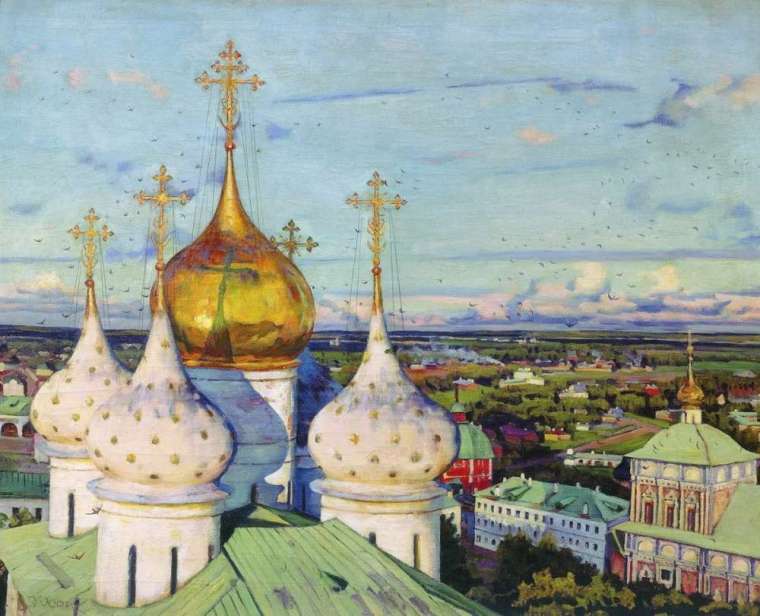
In 1920 the lavra was closed and organised into a historical and architectural museum. In 1930 the city of Sergiev Posad was renamed Zagorsk in honour of Vladimir Zagorsky, a former secretary of the Moscow Committee of the Russian Communist Party. In 1946 the lavra was allowed to function once more and it became the seat of the newly re-established patriarch of Moscow and All Rus, which it remained until 1983 when the residency was moved to the Danilov Monastery in Moscow. The city was renamed Sergiev Posad in 1991. In 1993 the lavra was included on UNESCO's World Heritage List as the Architectural Ensemble of the Trinity Sergius Lavra in Sergiev Posad.

 History
History